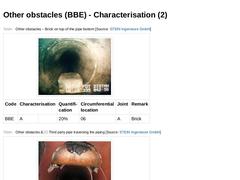
|
(Table: Other obstacles – Brick on top of the pipe bottom) (Table: Other obstacles – Third party pipe traversing the piping) (Table: Other obstacles – Object intrudes through a connection) (Table: Other obstacles – Object trapped in the piping) (Table: Other obstacles – Plastic foil got caught at an intruding connection) |
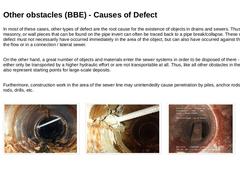
|
In most of these cases, other types of defect are the root cause for the existence of objects in drains and sewers. Thus, bricks, masonry, or wall pieces that can be found on the pipe invert can often be traced back to a pipe break/collapse. These causal types of defect must not necessarily have occurred immediately in the area of the object, but can also have occurred against the direction of the flow or in a connection / lateral sewer.
On the other …
|
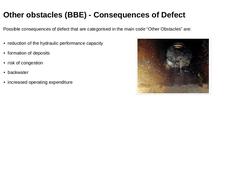
|
Possible consequences of defect that are categorised in the main code “Other Obstacles” are: (Image: Sewer blockage due to obstruction) |
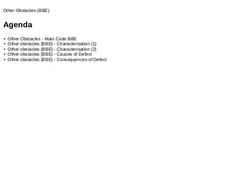
|
|
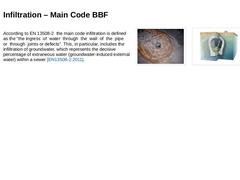
|
According to EN 13508-2 the main code infiltration is defined as the “the ingress of water through the wall of the pipe or through joints or defects”. This, in particular, includes the infiltration of groundwater, which represents the decisive percentage of extraneous water (groundwater-induced external water) within a sewer [EN13508-2:2011]. (Image: Infiltration (BBF) of groundwater into a sewer bed – gushing – entering under pressure (code suffix … |
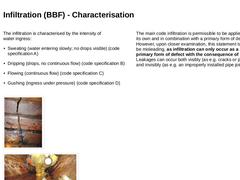
|
The infiltration is characterised by the intensity of
water ingress: -
Sweating (water entering slowly; no drops visible) (code specification A)
-
Dripping (drops, no continuous flow) (code specification B)
-
Flowing (continuous flow) (code specification C)
-
Gushing (ingress under pressure) (code specification D)
(Image: Infiltration (BBF) of groundwater through a crack in a masonry sewer - Dripping (code specification B)) (Image: Infiltration (BBF) … |
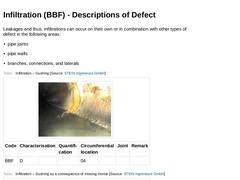
|
Leakages and thus, infiltrations can occur on their own or in combination with other types of
defect in the following areas: (Table: Infiltration – Gushing) (Table: Infiltration – Gushing as a consequence of missing mortar) (Table: Infiltration – Gushing) |
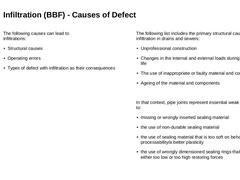
|
The following causes can lead to
infiltrations: The following list includes the primary structural causes for infiltration in drains and sewers: -
Unprofessional construction
-
Changes in the internal and external loads during the service life
-
The use of inappropriate or faulty material and components
-
Ageing of the material and components
In that context, … |
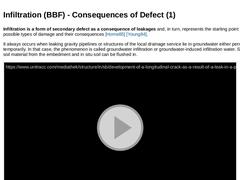
|
Infiltration is a form of secondary defect as a consequence of leakages and, in turn, represents the starting point for further possible types of damage and their consequences [Horne85] [Young84]. It always occurs when leaking gravity pipelines or structures of the local drainage service lie in groundwater either permanently or temporarily. In that case, the phenomenon is called groundwater infiltration or groundwater-induced infiltration water. Simultaneously, … |
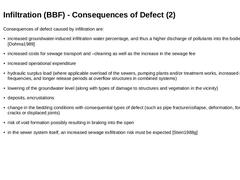
|
Consequences of defect caused by infiltration are: -
increased groundwater-induced infiltration water percentage, and thus a higher discharge of pollutants into the bodies of water [Dohma1989]
-
increased costs for sewage transport and –cleaning as well as the increase in the sewage fee
-
increased operational expenditure
-
hydraulic surplus load (where applicable overload of the sewers, pumping plants and/or treatment works, increased release frequencies, …
|
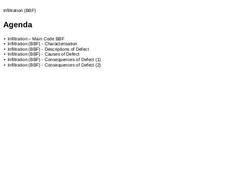
|
|
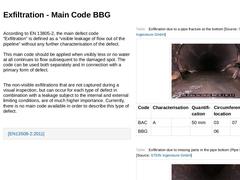
|
According to EN 13805-2, the main defect code
“Exfiltration” is defined as a “visible leakage of flow out of the pipeline” without any further characterisation of the defect.
This main code should be applied when visibly less or no water at all continues to flow subsequent to the damaged spot. The code can be used both separately and in connection with a primary form of defect.
The non-visible exfiltrations that are not captured during a visual inspection, …
|
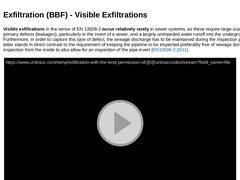
|
Visible exfiltrations in the sense of EN 13508-2 occur relatively rarely in sewer systems, as these require large-scale forms of primary defects (leakages), particularly in the invert of a sewer, and a largely unimpeded water runoff into the underground. Furthermore, in order to capture this type of defect, the sewage discharge has to be maintained during the inspection period. The latter stands in direct contrast to the requirement of keeping the … |
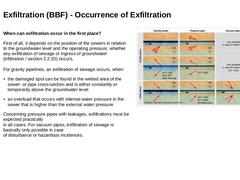
|
When can exfiltration occur in the first place? First of all, it depends on the position of the sewers in relation to the groundwater level and the operating pressure, whether any exfiltration of sewage or ingress of groundwater
(infiltration / section 2.2.20) occurs.
For gravity pipelines, an exfiltration of sewage occurs, when: |
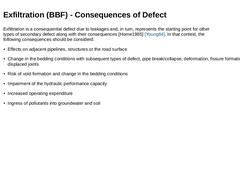
|
Exfiltration is a consequential defect due to leakages and, in turn, represents the starting point for other
types of secondary defect along with their consequences [Horne1985] [Young84]. In that context, the
following consequences should be considerd: -
Effects on adjacent pipelines, structures or the road surface
-
Change in the bedding conditions with subsequent types of defect, pipe break/collapse, deformation, fissure formation or displaced joints
|
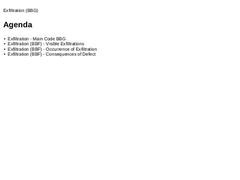
|
|
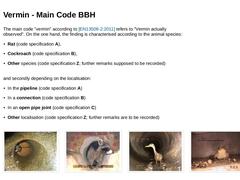
|
The main code "vermin" according to [EN13508-2:2011] refers to "Vermin actually
observed". On the one hand, the finding is characterised according to the animal species: -
Rat (code specification A),
-
Cockroach (code specification B),
-
Other species (code specification Z; further remarks supposed to be recorded)
and secondly depending on the localisation: |
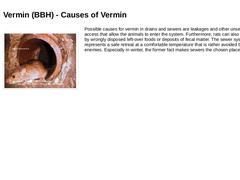
|
(Image: Vermin (rats) in a sewer) Possible causes for vermin in drains and sewers are leakages and other unsealed types of access that allow the animals to enter the system. Furthermore, rats can also be attracted by wrongly disposed left-over foods or deposits of fecal matter. The sewer system represents a safe retreat at a comfortable temperature that is rather avoided by natural enemies. Especially in winter, the former fact makes sewers the chosen … |
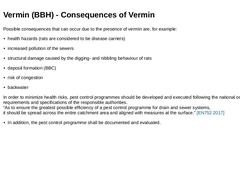
|
Possible consequences that can occur due to the presence of vermin are, for example: -
health hazards (rats are considered to be disease carriers)
-
increased pollution of the sewers
-
structural damage caused by the digging- and nibbling behaviour of rats
-
deposit formation (BBC)
-
risk of congestion
-
backwater
In order to minimize health risks, pest control programmes should be developed and executed following the national or local requirements and … |
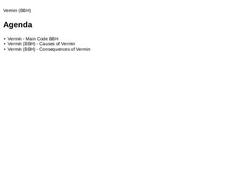
|
|
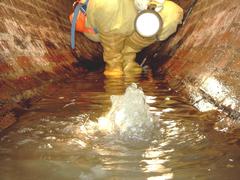
|
This lesson builds on the module "Application of coding systems using the example of EN 13508-2" and introduces the coding of damage (findings) for sewers and drains. In more detail, the causes and consequences of damage are explained for the damage and, in some cases, the damage mechanisms are presented as well. Upon successful completion of this course, you will be able to: - apply the coding system according to EN 13508-2
- classify damage
- name causes and consequences of damage
|
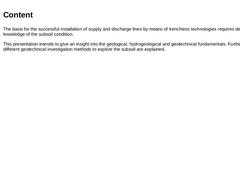
|

The basis for the successful installation of supply and discharge lines by means of trenchless technologies requires detailed knowledge of the subsoil condition. This presentation intends to give an insight into the geological, hydrogeological and geotechnical fundamentals. Furthermore, the different geotechnical investigation methods to explore the subsoil are explained. |
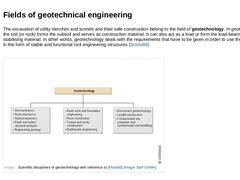
|

The excavation of utility trenches and tunnels and their safe construction belong to the field of geotechnology. In geotechnology, the soil (or rock) forms the subsoil and serves as construction material. It can also act as a load or form the load-bearing and stabilising material. In other words, geotechnology deals with the requirements that have to be given in order to use the soil (or rock) in the form of stable and functional civil engineering … |
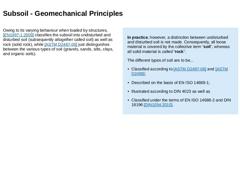
|

Owing to its varying behaviour when loaded by structures, [EN1997-1:2009] classifies the subsoil into undisturbed and disturbed soil (subsequently altogether called soil) as well as rock (solid rock), while [[ASTM D2487-06]] just distinguishes between the various types of soil (gravels, sands, silts, clays, and organic soils). In practice, however, a distinction between undisturbed and disturbed soil is not made. Consequently, all loose material is … |
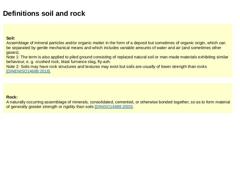
|

Soil:
Assemblage of mineral particles and/or organic matter in the form of a deposit but sometimes of organic origin, which can be separated by gentle mechanical means and which includes variable amounts of water and air (and sometimes other gases).
Note 1: The term is also applied to piled ground consisting of replaced natural soil or man-made materials exhibiting similar behaviour, e. g. crushed rock, blast furnance slag, fly-ash.
Note 2: Soils … |
|